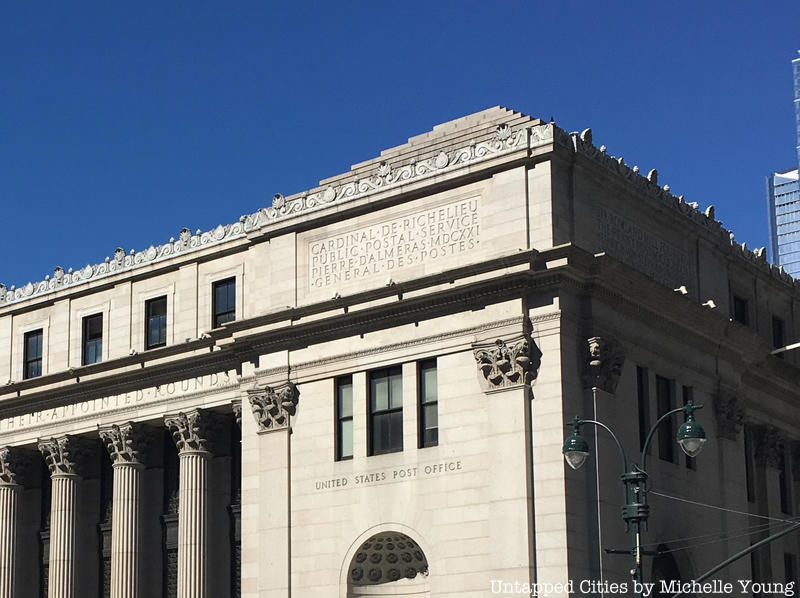3. Why Is Cardinal De Richelieu’s Name on the James A. Farley Post Office?
 Inscriptions on the James A. Farley Post Office near Penn Station
Inscriptions on the James A. Farley Post Office near Penn Station
Look up at the facade of the James A. Farley Post Office and you’ll notice an inscription of Cardinal de Richelieu’s name (along with a few other French names) in the top right corner. Why is a 17th century French clergyman’s name inscribed on a U.S. Postal Service building?
It turns out that the architect of the building, William Mitchell Kendall, paid tribute to the 2000+ year history of mail delivery by inscribing the names of key postal players on the corners of the building. Under each name is a description of the person’s contribution. Cardinal de Richelieu was included because he made the French postal service more accessible to the public (his description reads “Public Postal Service”).Other names on the Eighth Avenue facade include King Louis XI, who instigated Europe’s first postal service (“Created the Post Royale”), and Franz von Taxis (of Thurn and Taxis), who helped organize permanent postal service between European nations (“Imperial Postmaster”).
Names on the 31st Street facade range from Persian Emperor Cyrus, who sent mounted relay messengers throughout sixth century B.C. Egypt, to Charlemagne, who spread the preexisting Roman postal network to Italy, Germany, and France. Lastly, the 33rd Street names include Andrew Hamilton, Colonial Governor of New Jersey who patented the colonies’ first postal service, and Sir Rowland Hill, a 19th century Englishman who pushed for reforms in the British postal service.
Also, have you noticed the building’s more prominent inscription across the 8th Avenue facade? It reads, “Neither snow nor rain nor heat nor gloom of night stays these couriers from the swift completion of their appointed rounds.” Commonly thought to be the creed of the U.S. Postal Service, this inscription actually has no official purpose. Kendall pulled the text from Herodotus’s Histories, which described the messenger system of instituted by Cyrus in Persia.





